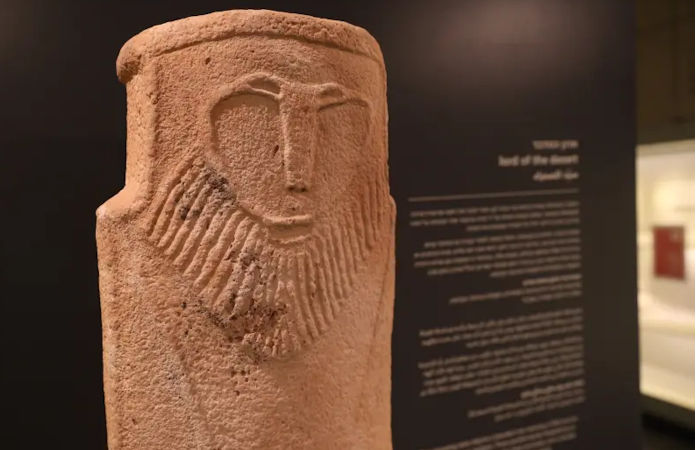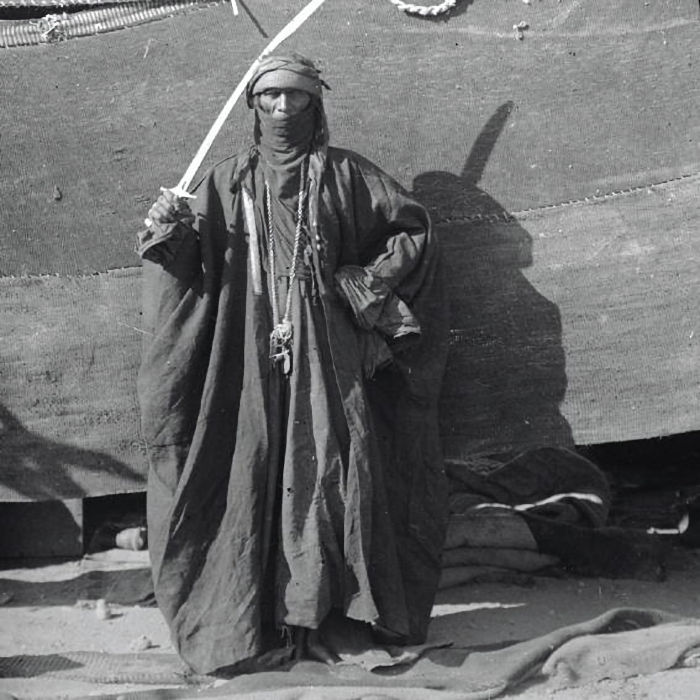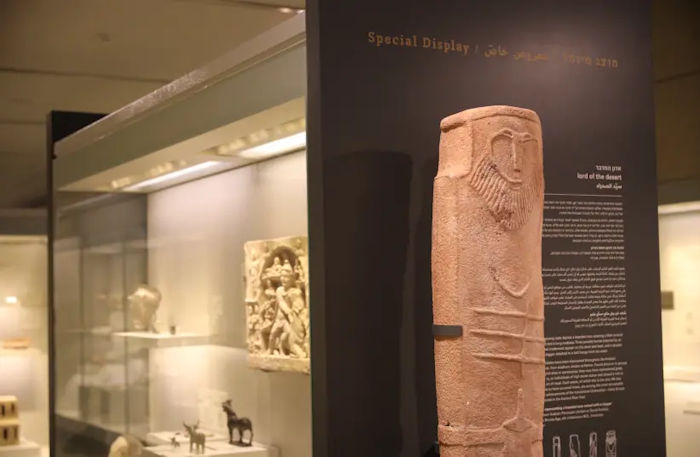Jan Bartek – AncientPages.com – Dubbed “The Lord of the Desert,” the ancient statue from the 4th 4th millennium B.C. has been revealed to the public for the first time. After having been forgotten in a storage room at the Israel Museum in Jerusalem for a very long time, the stone stele was accidentally “re-discovered” during an inventory.
The magnificent ancient stele poses a mystery as researchers do not know whom it depicts. Was the stele made in the image of an ancient God, a King, an unknown leader, or someone else? The person in question must have been of some importance if people bothered to carve the man’s face.

Lord of the Desert stele exhibited at the Israel Museum PH๏τo credit: Marc Israel Sellem / The Jerusalem Post
“The imposing stele – a standing relief made of a stone slab carved with figurative images – is unique not only because of its life-like size: it stands 1.74 meters high (5.7 feet) and weighs 350 kgs. (771 lbs.), but also because of its extremely well-preserved condition despite having been broken into two pieces.
The stele depicts a bearded man wearing a band around his head, reminiscent of the agal, or cord, which holds the keffiyeh in place, and a long necklace. Three parallel cords with a long implement through them cross his chest and back. A double-bladed dagger attached to a belt hangs from his waist,” the Jerusalem Post reports.
The Jerusalem Museum was funded in 1965 and I’s possible the “Lord of The Desert” stele was there from the beginning. It was found in 2017 and Laura A. Peri, curator of Western Asiatic Antiquities at the museum has spent five years restoring the ancient stele that was put on display on March 8, 2022.
“We don’t know anything about this specific stele or how it got to the museum. We just know it was in the museum for a long time, since its founding. It was a very difficult and complicated mission to restore it and put up the exhibit because it is very heavy and does not have a base so it is not stable.
We are really speaking of a very early and impressive, one-of-a-kind object and it is finally available for viewing by the public,” Peri said. “There is no other object like this in the world. The figurative carved images are exceptional and it is monumental in size. When they carved him they carved him on all sides and emphasized the eyes and mouth, the long necklace and the belt with the dagger.”
Peru added it’s possible the Lord of the Desert statue may be linked to the north Arabian Desert or south Jordan.
“Dancers performing the traditional Ardah dance in Saudi Arabia and Yemen today wear this attire, including several objects depicted on the stele such as the dagger – called a jambiya, an agal, and a leather ammunition belt”, Peri told the Jerusalem Post.
According to Arab America, “Ardah is the traditional and folkloric group dance which originates from Arabia. It is even known as the national dance of Saudi Arabia.

The sword dance Ardah is often performed by Bedouins. Credit: Jewish National Fund pH๏τo archive – Public Domain
Traditionally, it is performed by only men due to its origins. It began with the male tribes of the central Nejd Region. This is why Ardah is also called Al-Ardha Al-Najdiyah in remembrance of its roots and respect to the tribes. One of the tribes involved is known as the Bedouins.
The central Nejd Region is in the center of Saudia Arabia and holds a third of its population. It was a warrior dance in which to be performed to encourage their brave soldiers. They were ready to risk their lives in ferocious battles in which the Ardah gave them the energy to proceed. Today Ardah is performed in remembrance of those noble warriors, but also in celebration.”
Similar steles have been unearthed in Jordan, Yemen and South Arabia, but most of them are broken and it most cases the carvings were not well-preserved.

Who was the Lord of the Desert? PH๏τo credit: Marc Israel Sellem / The Jerusalem Post
One stela also depicting a bearded man, not unlike the Lord of the Desert was discovered in El-Maakir-Qaryat al-kaafa near Ha’il, Saudi Arabia. It is currently on exhibit at National Museum in Riyadh, Saudi Arabia, but it is much shorter, being only one meter high (3.2 feet).
The trouble when examining the Lord of the Desert stela is that there are inscriptions that could tell scientists more about the origin of the artifact.
As the Jerusalem Post reports, “They may have represented gods, ancestors, or individuals of high social status and been used as a gravestone or played a role in rituals, she said. Because no written text from that period is available to substantiate any theories of their purpose, scholars can only guess based on later traditions, she added.
In later civilizations, steles were used to emphasize boundaries by kings declaring their conquest over land, or they were placed in temples as images of god, she said.
Interestingly, Peri said, similar steles from the same period have also been found ranging from the Iberian Peninsula to the Caucasus, and though they are not full anthropomorphic figures, they do have similar details such as the dagger and a face of a bearded man.
“The dagger was a very important element,” she said.
The Lord of the Desert stele is now on display opposite another stele from the second half of the 8th century BCE of the founder of the ᴀssyrian Empire, King Tiglath-Pileser III, which has an inscription paying tribute to Menachem, son of Gadi, King of Israel.
It can be added that Tiglath Pileser’s origin is shrouded in history. Once in power, he claimed through his own inscriptions to be the son of Adad-nirari III, but that ᴀssociation is not proven. His father’s and mother’s name, if recorded, is now lost to time.
Despite the difficulties, scientists are determined to continue to examine the Lord of the Desert stele and hopefully, one day unravel the truth about this fascinating ancient artifact.
Written by Jan Bartek – AncientPages.com Staff Writer





